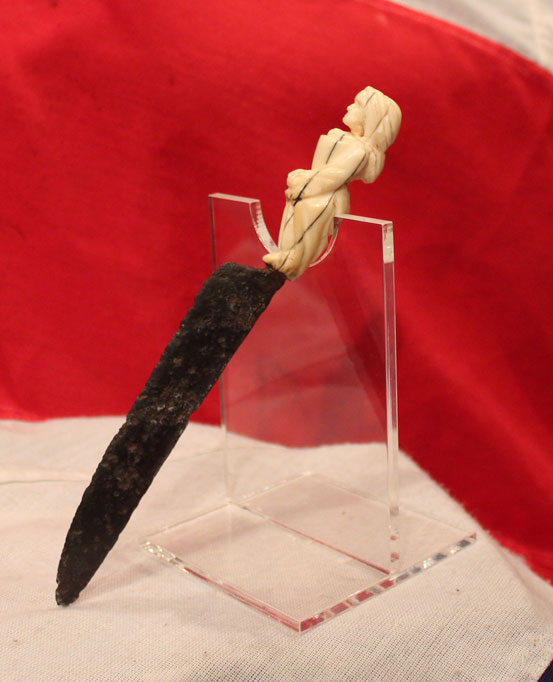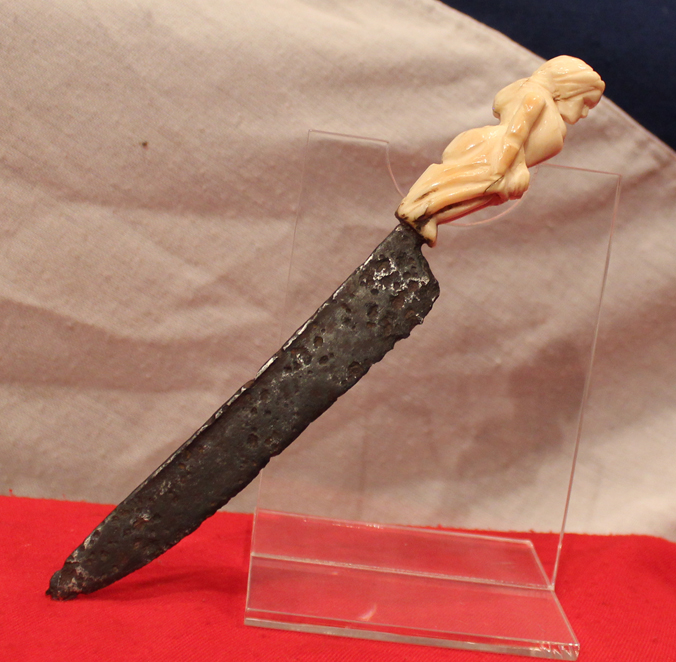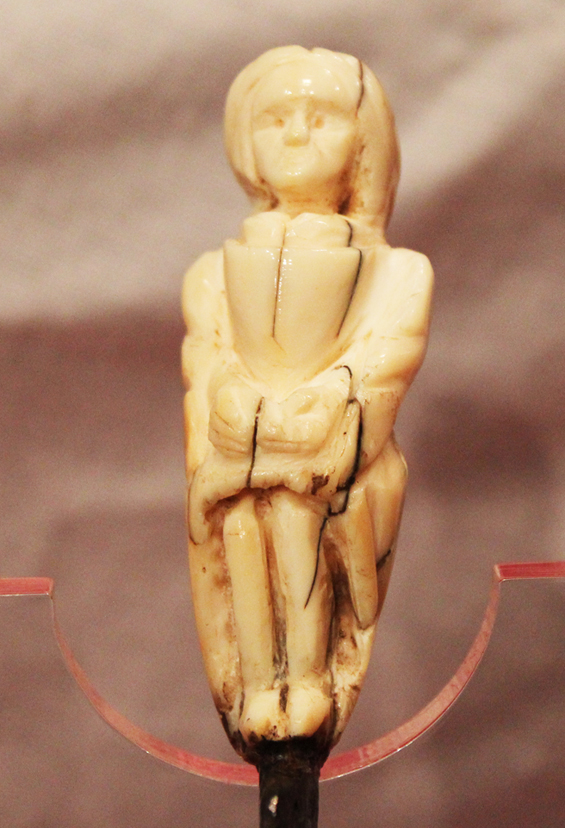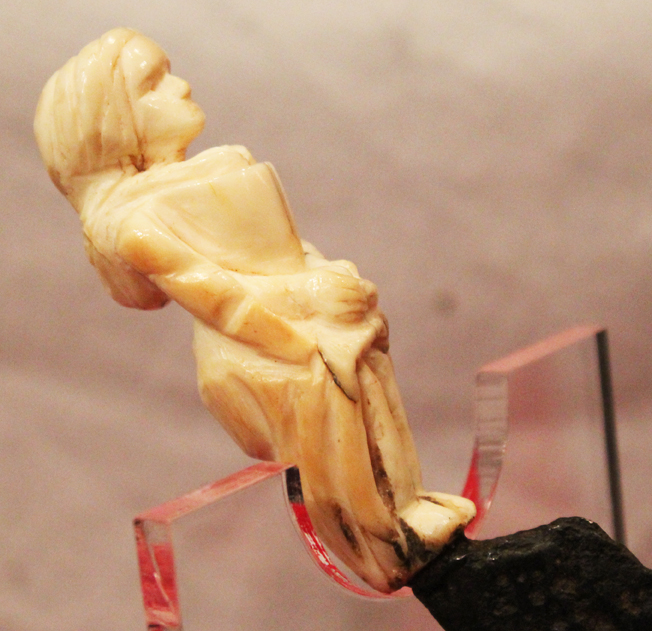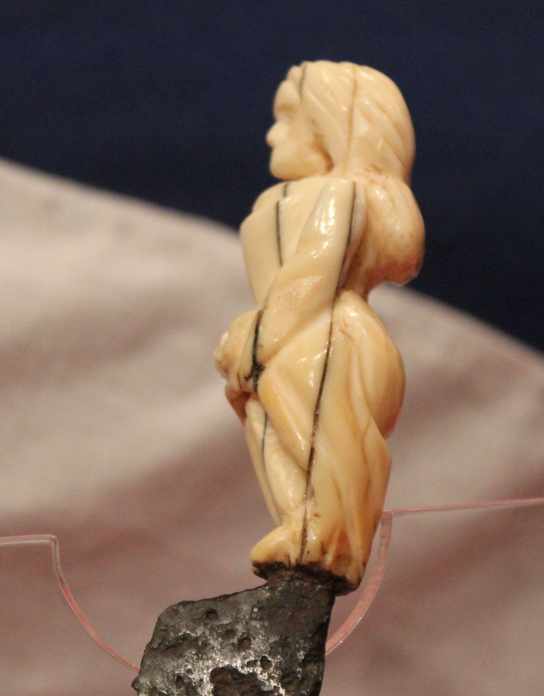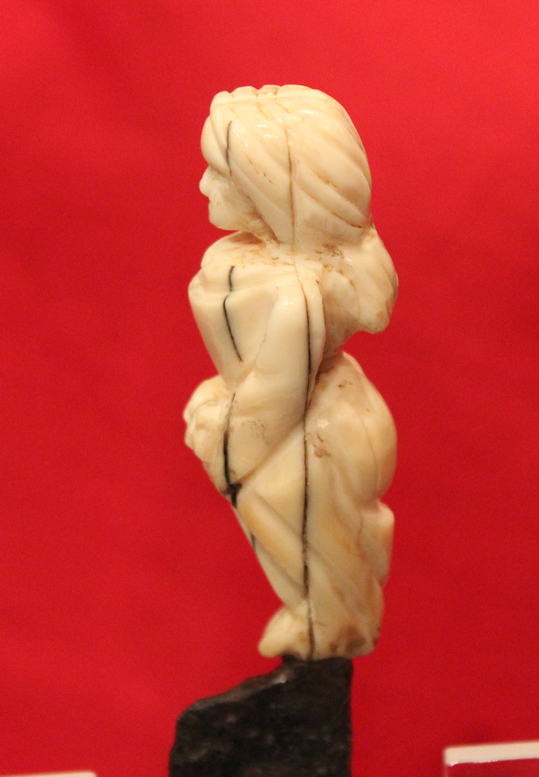A Most Beautiful and Very Rare Medieval Tudor Period Erotically Carved Bone Hilted Knife or Dagger 500 to 600 Years Old
A most delightful and original piece of early carved erotica. That is also a functioning knife or dagger. Likely early Tudor Period, 15th to 16th century. Carved in form of a lady in traditional dress in a demi-seated position, exposing her decolletage and her lower legs, with her hand clasping the hem of her dress, resting at her knees. Single edged blade with natural well aged russeted sound blade The pose is most intriguing portraying semi nudity, in a bawdy and erotic pose. Knives of the medieval era could mounted with carved hilts for of those status and great worth, but it is very unusual to see an example with such an erotic figural design. Cutlery manufacture involved a number of specialists: the blademaker, grinder, hafter (the person who made the handle), sheather (the maker of the sheath in which the knife was carried) and the furbisher or cutler, who assembled the parts, forging the blade, and sold the finished items. The London Cutlers Company, set up in 1415, regulated the trade until the 18th century. It obliged cutlers to mark their wares with their personal devices. In the Medieval era men carried their knives, not in their pockets, if indeed they had any, but usually in sheaths hanging from a girdle which went round the body just above the hips. It was the business of the girdler, as he was called, to supply these girdles, and we shall see that in the inventory of a York girdler, dated 1439, there were many girdles and knives. Most knives although made for protection, could double as an eating knife.
There were few table-knives, in this era. and when at table nearly everybody used the knife of his or her own. In 1392 a lady bequeathed "my knife which I use," in her last will and testament. Even in the last century, in taverns, in many countries, particularly in some towns of France, knives were not placed on the table, because it was expected that each person should have one of his own. 8.25 inches overall.
Code: 19762
995.00 GBP

